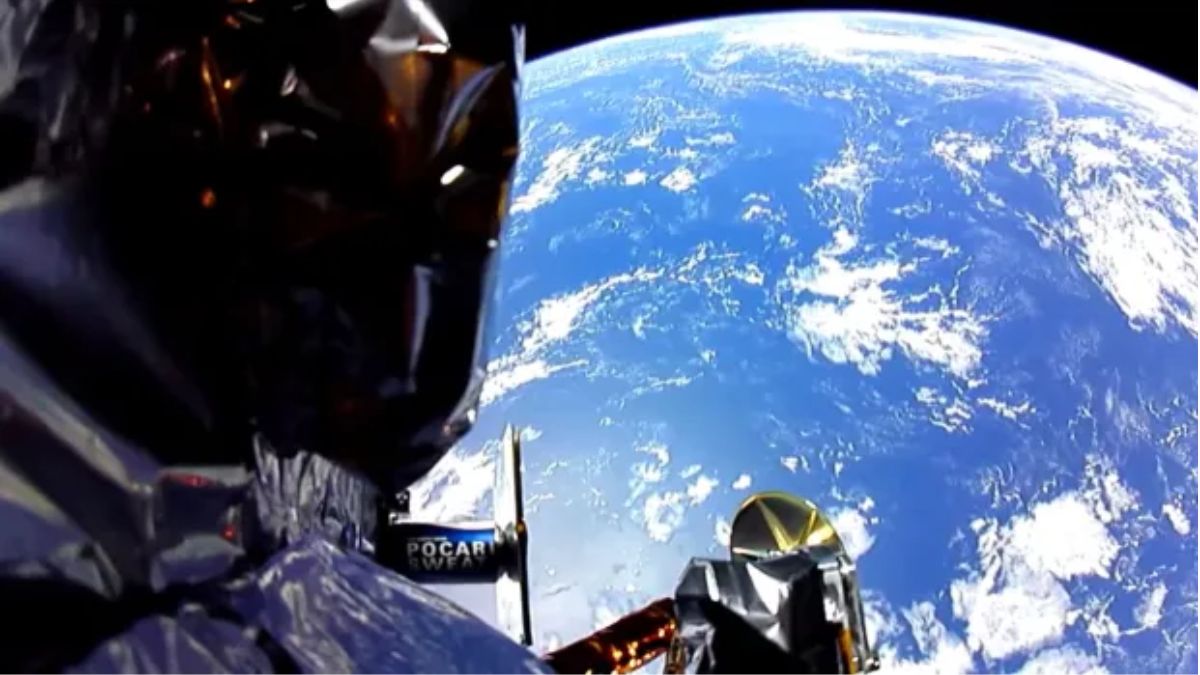Earth Will Be Visited by a Comet Once Every 50,000 Years
January 09, 2023 By Prelo Con

(Image Credit Google)
Skywatchers will soon have a rare opportunity to see a comet that only swings by our planet once every 50,000 years this month. In the coming weeks,
comet C/2022 E3 ZTF will be near to Earth and may even be visible with the unaided eye.
The comet, hence the ZTF in its name, was found in March 2022 at the Zwicky Transient Facility when it was over 400 million miles from the sun. Comets are largely composed of ice, as opposed to asteroids, which are comprised of rock. As they grow closer to the sun and become hotter, the ice melts and releases gasses. The unique comet tails are created by this procedure. A very far-off cloud of frozen bodies that orbits the sun far beyond the orbits of planets and the Kuiper belt, the Oort cloud is assumed to be the source of long-period comets with highly eccentric orbits, like this one.
The first such comet since NEOWISE went by the Earth in 2020, Comet C/2022 E3 ZTF, should be visible to the unaided eye because it will be bright enough to do so. NEOWISE provided breathtaking vistas as it approached the globe, but the comet visible this month won't be as dazzling as that one and will probably appear more "like a smudge in the sky," according to
Sky at Night magazine.
[caption id="" align="alignnone" width="1600"]

Photo Credit: NewsWeek[/caption]
Skywatchers will need binoculars or a telescope to obtain the greatest view of C/2022 E3 ZTF, and the ideal time to search for it will be in late January or early February. On January 12 and February 1, the comet reaches its closest approaches to the sun and Earth, respectively. People in the Northern Hemisphere are advised by the
Planetary Society to search the northwesterly skies for a faint, greenish smudge.
On January 13, the
Virtual Telescope Project will webcast the comet's close approach live if you'd prefer watch from home.
By Prelo Con
Following my passion by reviewing latest tech. Just love it.


 Photo Credit: NewsWeek[/caption]
Skywatchers will need binoculars or a telescope to obtain the greatest view of C/2022 E3 ZTF, and the ideal time to search for it will be in late January or early February. On January 12 and February 1, the comet reaches its closest approaches to the sun and Earth, respectively. People in the Northern Hemisphere are advised by the Planetary Society to search the northwesterly skies for a faint, greenish smudge.
On January 13, the Virtual Telescope Project will webcast the comet's close approach live if you'd prefer watch from home.
Photo Credit: NewsWeek[/caption]
Skywatchers will need binoculars or a telescope to obtain the greatest view of C/2022 E3 ZTF, and the ideal time to search for it will be in late January or early February. On January 12 and February 1, the comet reaches its closest approaches to the sun and Earth, respectively. People in the Northern Hemisphere are advised by the Planetary Society to search the northwesterly skies for a faint, greenish smudge.
On January 13, the Virtual Telescope Project will webcast the comet's close approach live if you'd prefer watch from home.






